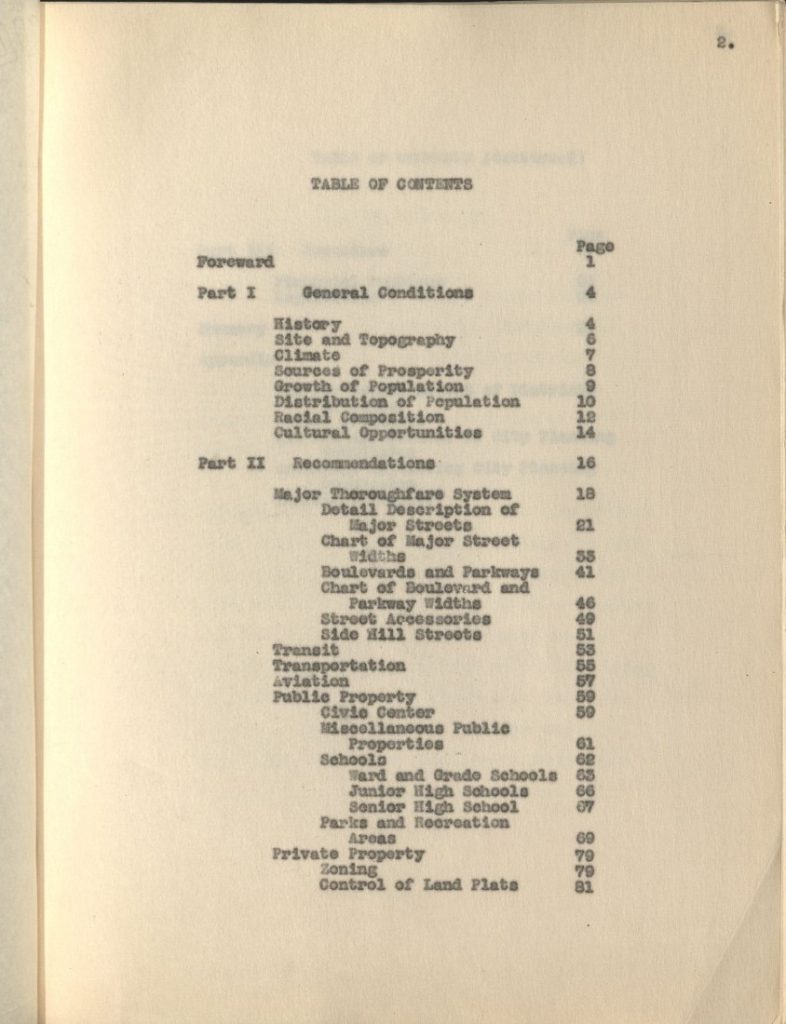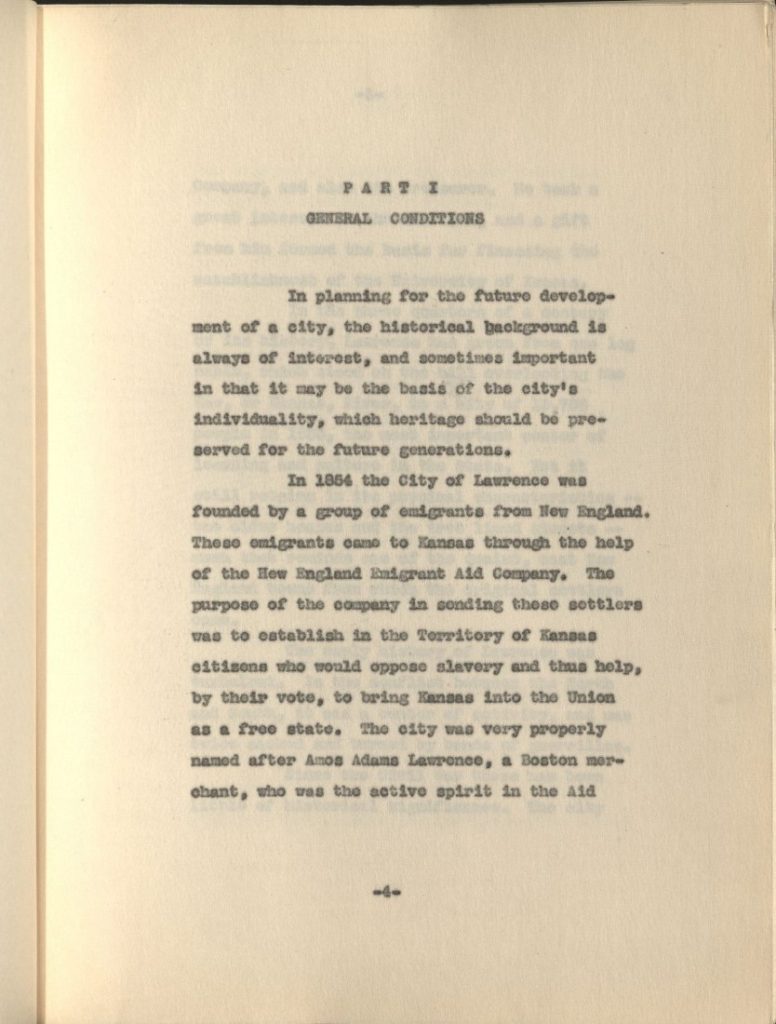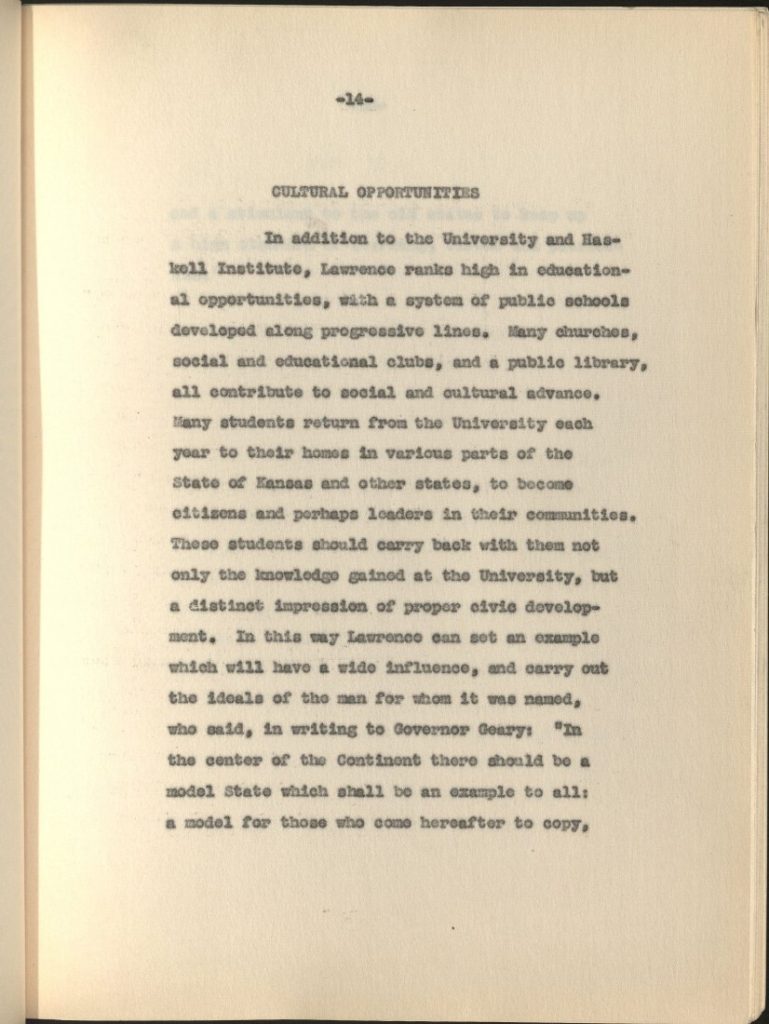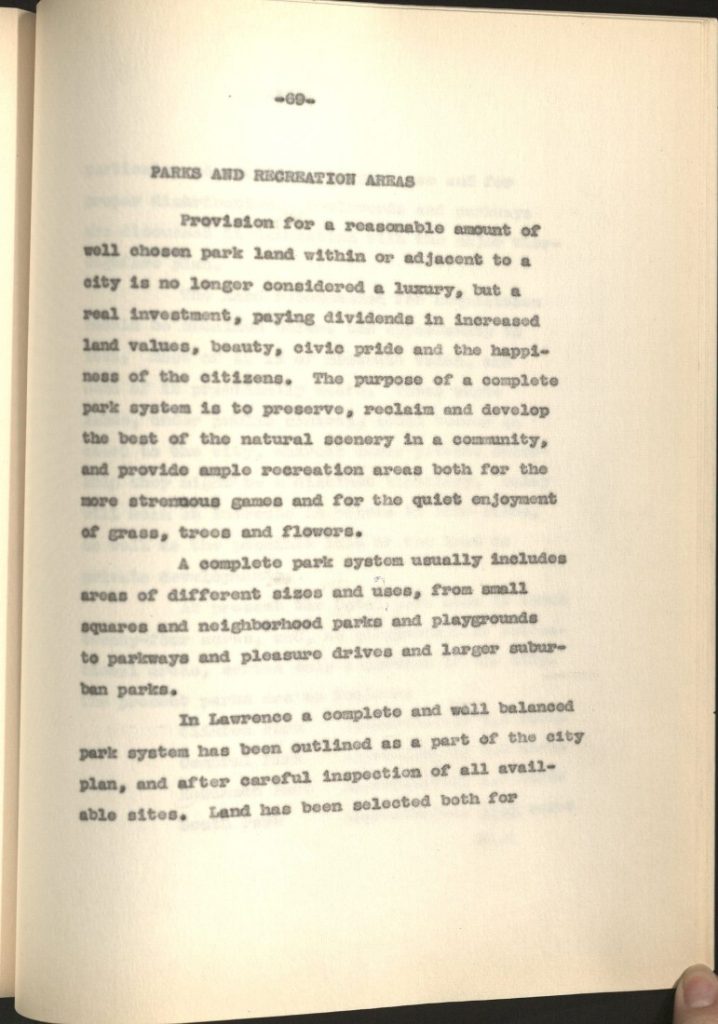That’s Distinctive!: Lawrence City Plan
August 9th, 2024Check the blog each Friday for a new “That’s Distinctive!” post. I created this series to provide a lighthearted glimpse into the diverse and unique items at Spencer. “That’s Distinctive!” is meant to show that the library has something for everyone regardless of interest. If you have suggested topics for a future item feature or questions about the collections, you can leave a comment at the bottom of this page. All collections, including those highlighted on the blog, are available for members of the public to explore in the Reading Room during regular hours.
This week on That’s Distinctive! I am sharing an item from our Kansas Collection. While I frequently share books, photos, and diaries from the collection, it houses so much more. The collection also contains historic documents such as Douglas County records, architectural drawings and blueprints, and other planning documents. Today I share A City Plan for Lawrence, Kansas, from 1930. The document is a 92-page typescript report that includes recommendations regarding streets and transportation, public properties, schools, and zoning. The report was prepared by Hare & Hare, a Kansas City, Missouri, landscape architecture and planning firm that was founded by a father-and-son team in 1910. The firm’s projects ranged from cemeteries and parks to larger scale planning projects. One of the firm’s most notable projects was the Nelson-Atkins Museum of Art in Kansas City. After a couple of mergers over the years, today the firm is known as Ochsner Hare & Hare, a Design Studio of Olsson Associates.
As seen by the table of contents shown below, the plan covers a wide range of topics including transit, zoning, growth and distribution of population, and private property. The plan opens with some general historical background of the city to help readers situate themselves. Of the pages shared, the “Cultural Opportunities” section seems to be hopeful that the city will have a lasting impact on students at the University of Kansas and Haskell Institute (now Haskell Indian Nations University) who come from out of town. The “Parks and Recreation Areas” section seems to urge the city to take pride in its leisurely spaces and to preserve those areas for use. It can be interesting to look back in time and see what the priorities were for those running the town then compared to those who are in charge now. Similar to looking back at pictures, you can “see” how things have shifted throughout time.
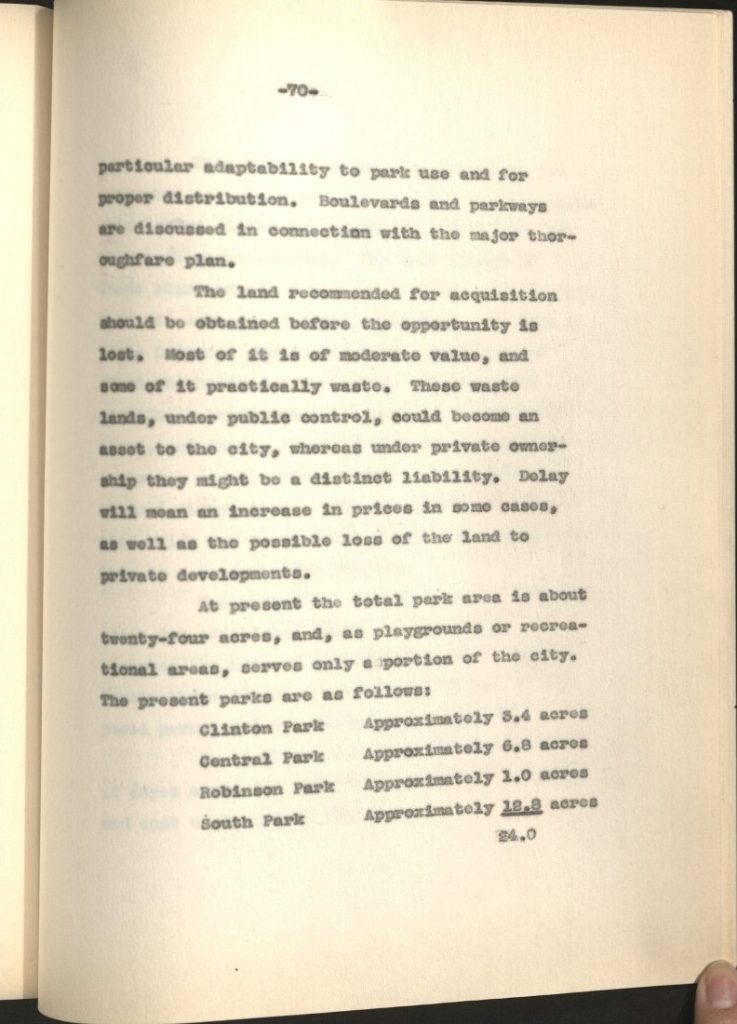
Tiffany McIntosh
Public Services


